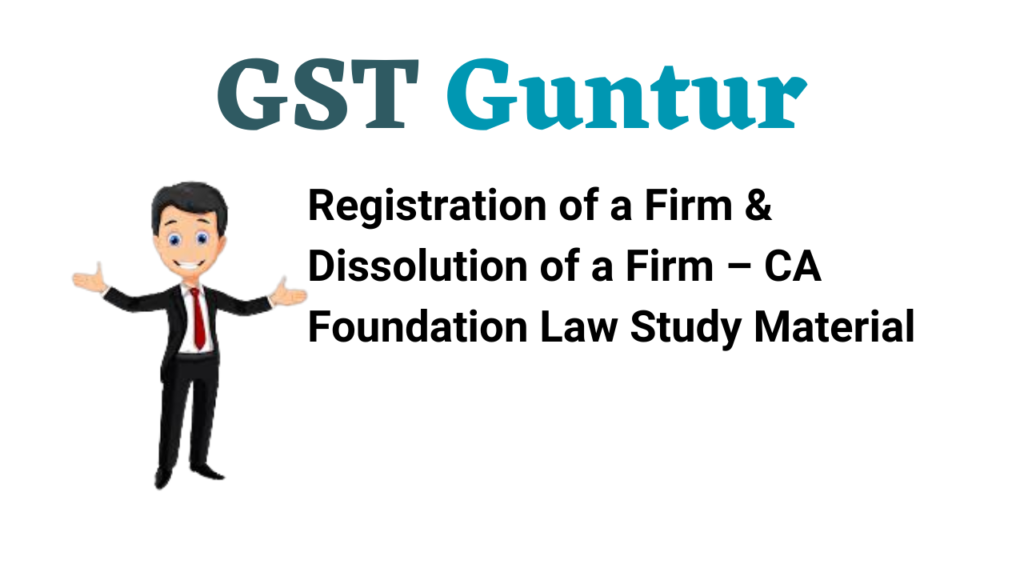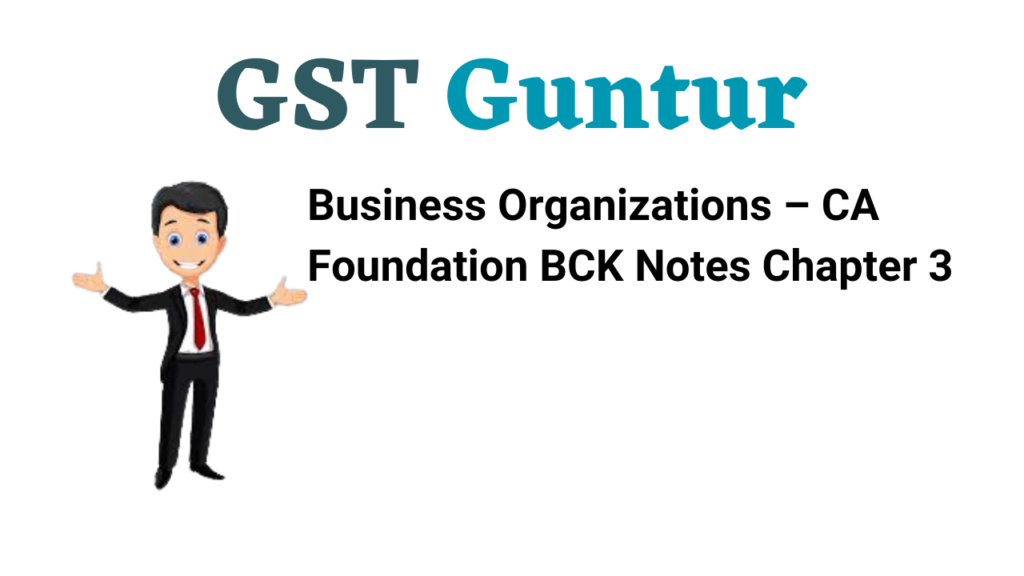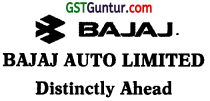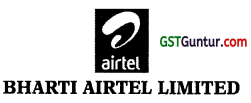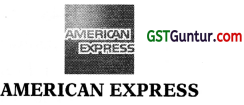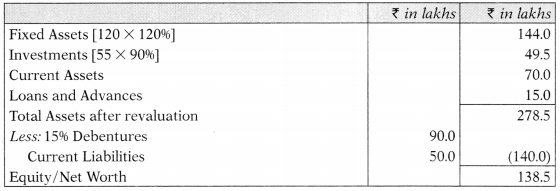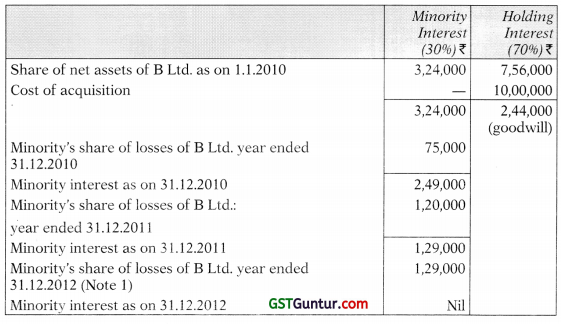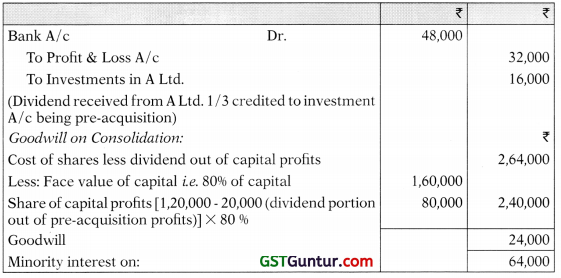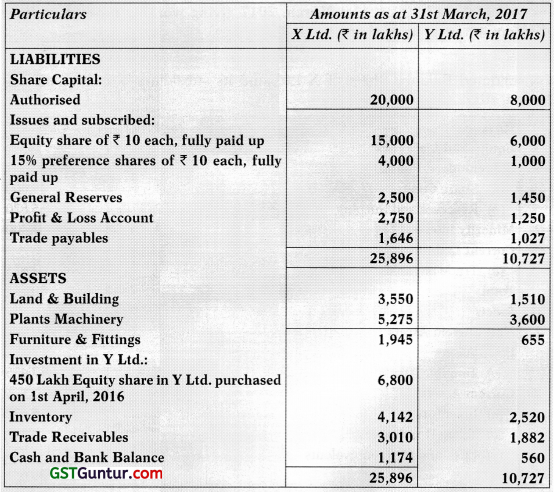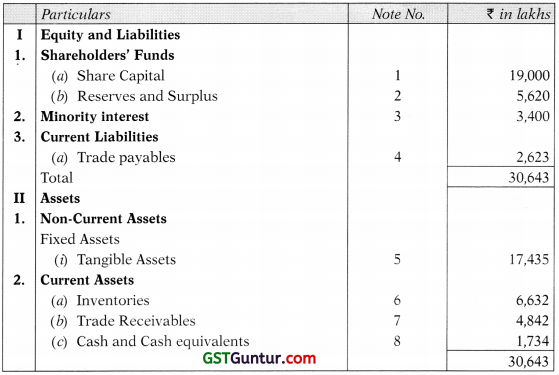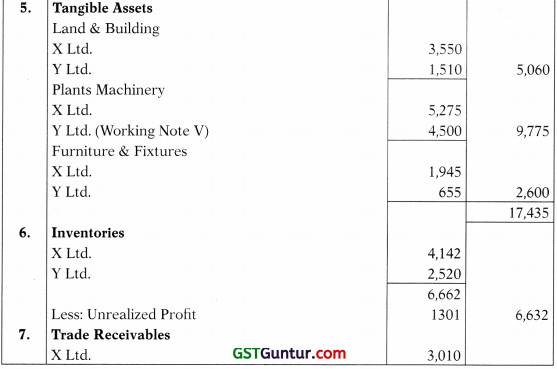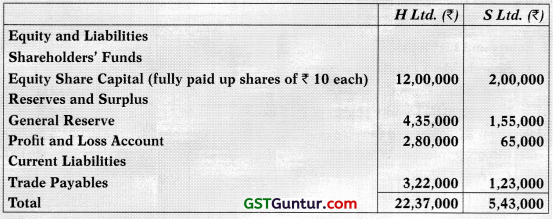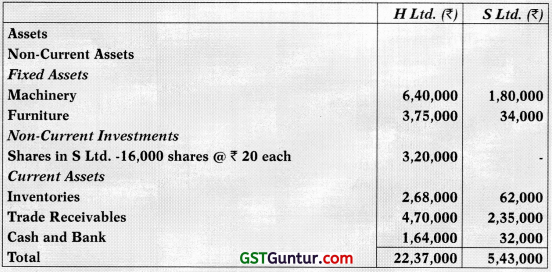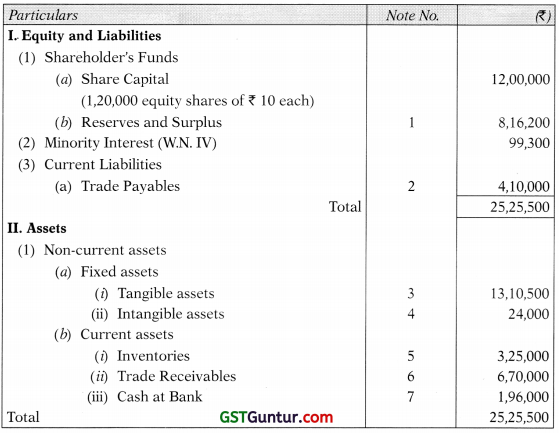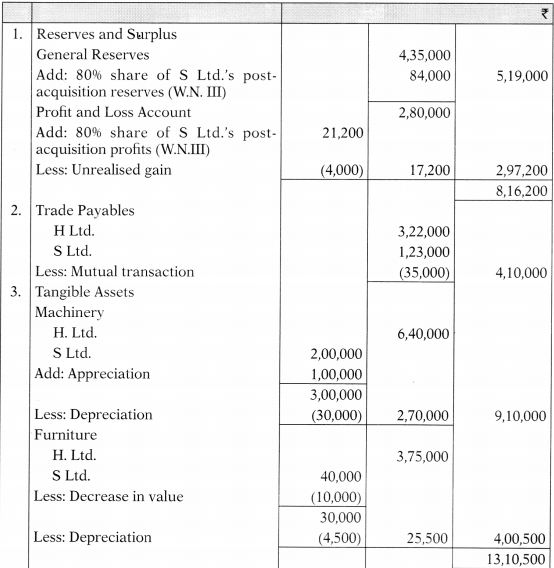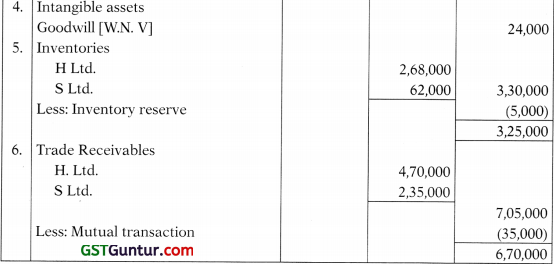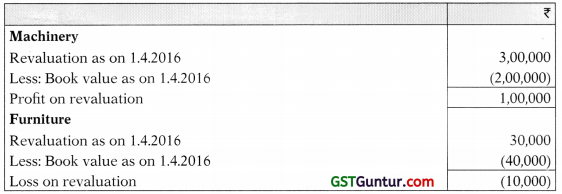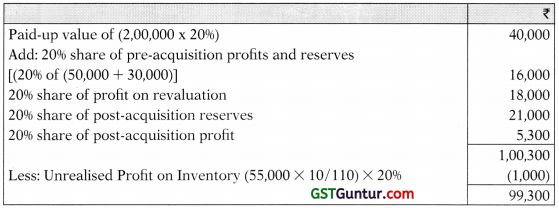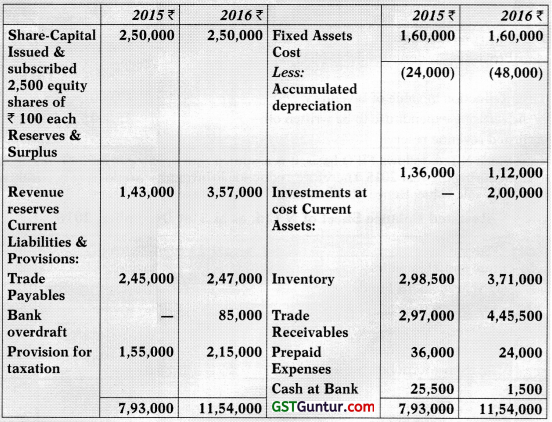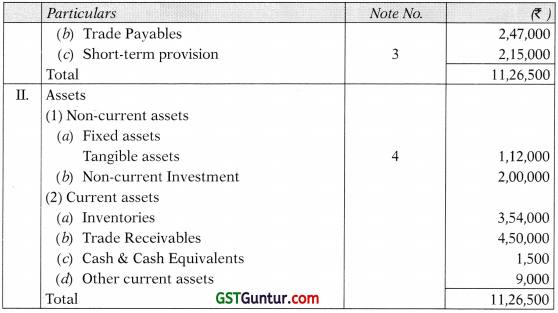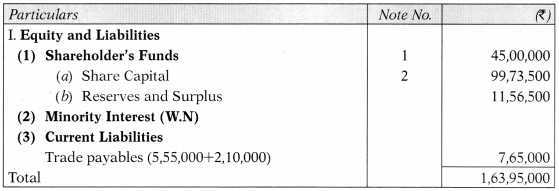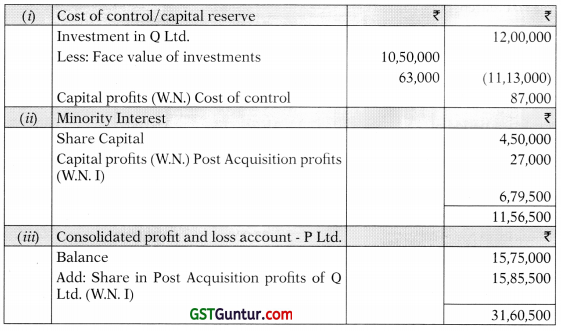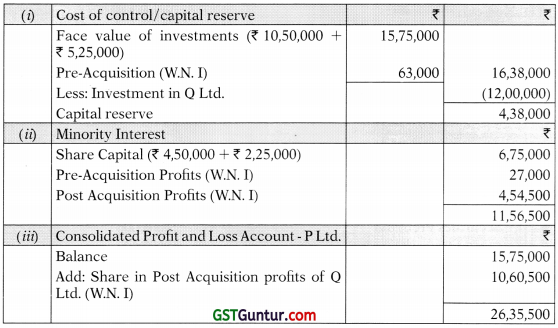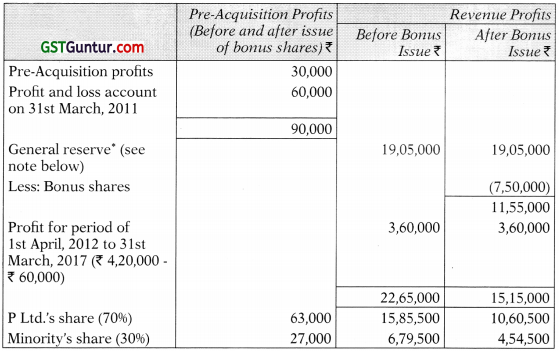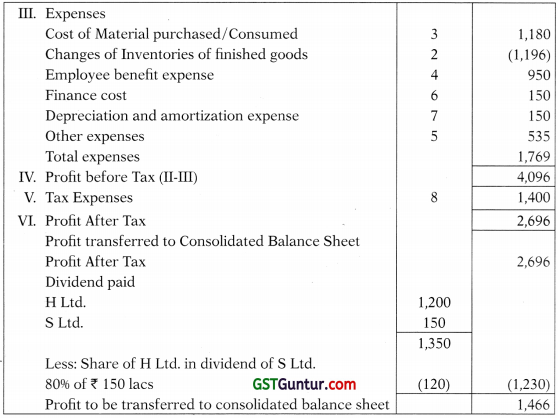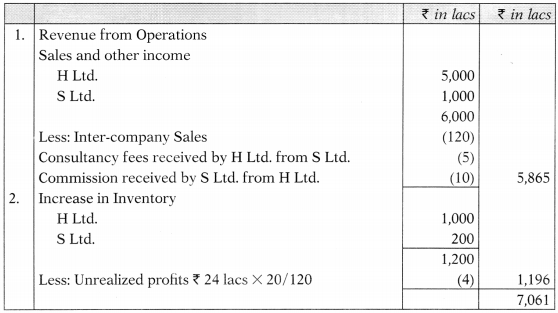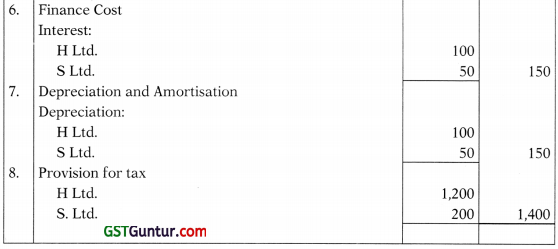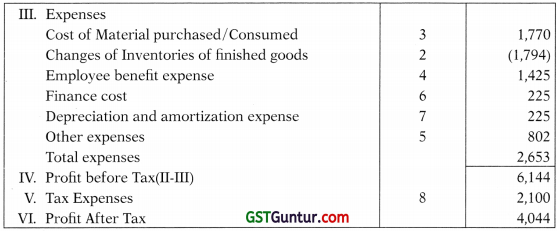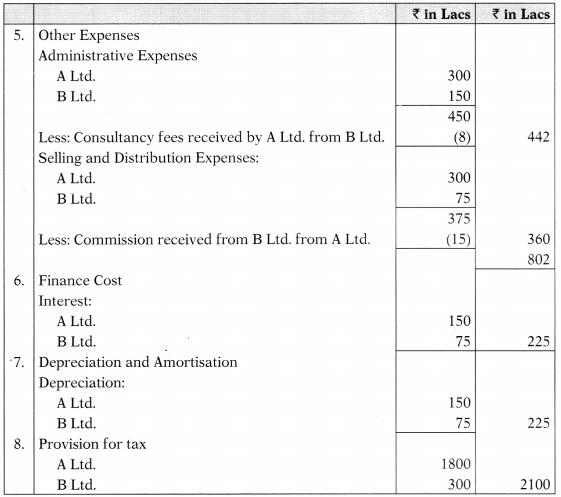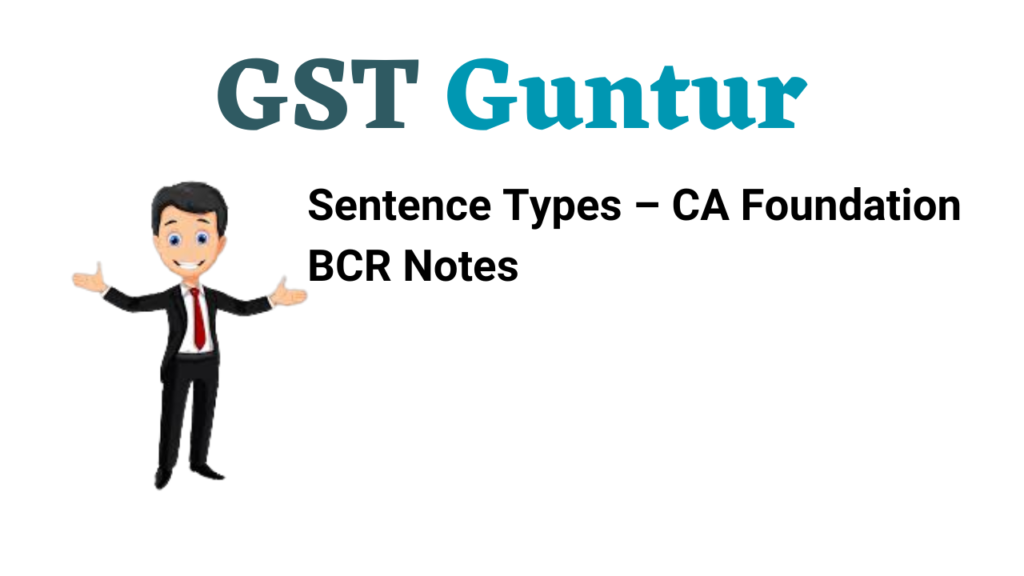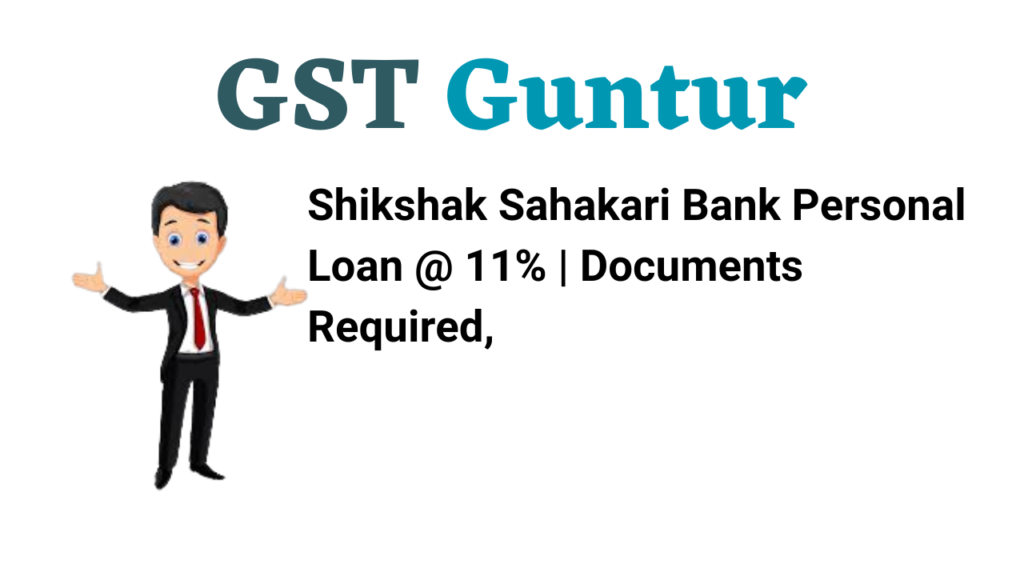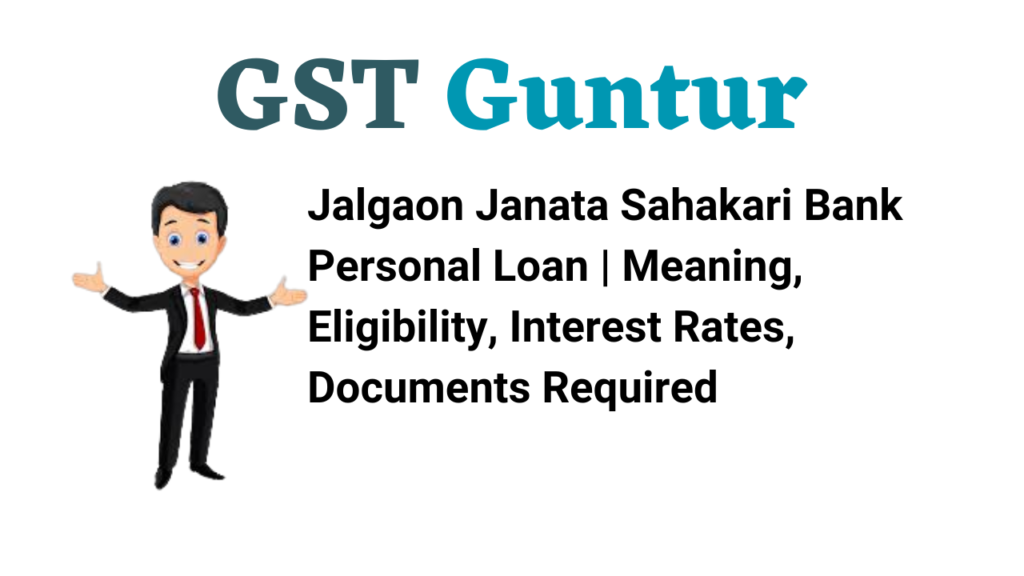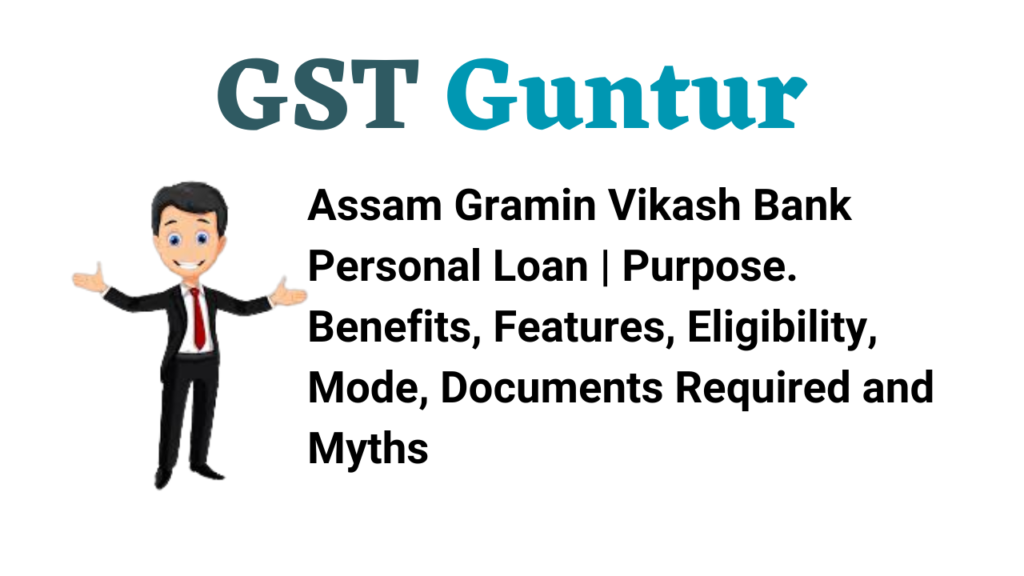Students should practice these CA Inter Auditing Case Studies – CA Inter Audit MCQ based on the latest syllabus.
CA Inter Auditing Case Studies – CA Inter Audit MCQ
Integrated Case Study – 1
Moon Group of companies is a retail chain involved in the selling of daily consumer needs directly to the customer. They are in the process of appointing an audit firm for the audit of their accounts for the financial year 2019-20. Moon Group is a South Indian based consumer store having a total of 16 outlets across 4 cities in South India.
Sumant & Co. is appointed as the principal auditor for the entire group. Companies Act, 2013 prescribes in detail the terms of this audit engagement. Further, there are many branch auditors appointed for the outlets in the other cities. The company also has an internal audit function conducted on quarterly basis by Ram & Co. Following are the observations during the course of the statutory audit:
(a) One of the discounts offered by the store is in the form of payback cards where reward points are accumulated and the customer can redeem the same on subsequent purchase. The management and internal auditors are of the opinion that the points redeemed are to be treated as trade discount. The external auditors are doubtful on the matter.
One of the outlet in Chennai region is in the verge of getting closed and is only left with low value stock to be cleared before closure. During the year, the sales were only around Rs. 1,40,000 and the auditor considers this component immaterial. All other outlets are performing well with good revenue share.
The gratuity valuation of the employees of the retail chain is done by an external valuer. The auditor, considering the quantum involved appoints an external auditor’s expert for the verification of the actuarial calculation of gratuity.
From the above facts, answer the following questions by choosing the correct answer:
Question 1.
As per SA 210 – Agreeing the Terms of Audit Engagement, which of the following statement is correct?
(a) Though law prescribes in sufficient detail the terms of the audit engagement, the auditor still needs to record them in a written agreement and also seek written agreement from management that it acknowledges and understands that it has responsibility for the preparation of financial statements.
(b) Since law prescribes in sufficient detail the terms of the audit engagement, the auditor need not record them in a written agreement except for the fact that law or regulation applies and also seek written agreement from management that it acknowledges and understands that it has responsibility for the preparation of financial statements.
(c) The auditor has to take an extract of the law prescribing the details of the terms of the audit engagement and obtain the counter signature of the management in it.
(d) Though law prescribes in sufficient detail the terms of the audit engagement, the auditor still needs to record them in a written agreement, however it need not seek written agreement from management that it acknowledges and understands that it has responsibility for the preparation of financial statements.
Answer:
(b) Since law prescribes in sufficient detail the terms of the audit engagement, the auditor need not record them in a written agreement except for the fact that law or regulation applies and also seek written agreement from management that it acknowledges and understands that it has responsibility for the preparation of financial statements.
Reason:
As per SA 210, if law or regulation prescribes in sufficient detail the terms of the audit engagement, the auditor need not record them in a written agreement, except for the fact that such law or regulation applies and that management acknowledges and understands its responsibilities.
Question 2.
With respect to the treatment of discount on redemption of points in payback card, what should be the action of the external auditor?
(a) The auditor can place reliance and go by the opinion of the branch auditor and internal auditor as they have only done a thorough and detailed audit of the accounts
(b) The auditor can place reliance on the management’s accounting policy as prima facie they are only responsible for preparation of financial statements.
(c) The external auditor has sole responsibility for the audit opinion expressed and hence he should perform procedures to satisfy himself on the correct treatment and issue opinion accordingly.
(d) The auditor can advise management on correct treatment but cannot qualify his opinion as branch auditor’s opinion has higher authority than external auditor’s opinion.
Answer:
(c) The external auditor has sole responsibility for the audit opinion expressed and hence he should perform procedures to satisfy himself on the correct treatment and issue opinion accordingly.
Reason:
As per SA 600 and SA 610, Statutory auditor may use the work performed by Another Auditor and Interna! Auditor respectively, however, ultimate responsibility for opinion expressed is of Statutory auditor. Hence, he should perform procedures to satisfy himself on the correct treatment and issue opinion accordingly.

Question 3.
What is the main objective of the external auditor, when he uses the work of the internal audit function of Ram & Co.?
(a) To determine as to which areas, what extent the work can be used and whether that work is adequate for the purposes of the audit.
(b) To appropriately direct, supervise and review the work of the internal audit function
(c) Review the internal audit report and audit the areas not covered by the internal audit function
(d) Enquire from management on the special points that arose during internal audit and follow up on the course of action on those points.
Answer:
(a) To determine as to which areas, what extent the work can be used and whether that work is adequate for the purposes of the audit.
Reason:
As per SA 610, the objectives of the external auditor, if using the work of the internal audit function, is to determine whether that work is adequate for purposes of the audit.
Question 4.
The external auditor finds that the branch auditor of the outlet in the Chennai region, which is in the verge of closing down, is audited by an auditor who is not a member of the Institute of Chartered accountants of India. What should the external auditor do?
(a) Since the professional competence of the auditor is in question, the external auditor should himself visit the premise and audit the accounts.
(b) Since the financial statement of the component is immaterial, the provisions of SA 600 do not apply.
(c) The auditor can rely on the financial statements of that component by obtaining written representation from management that the branch auditor is otherwise well qualified.
(d) Since the professional competence of the auditor is in question, the external auditor should coordinate with the branch auditor and call for the books of account and other explanations.
Answer:
(b) Since the financial statement of the component is immaterial, the provisions of SA 600 do not apply.
Reason:
As per SA 600, when the principal auditor concludes that the financial information of a component is immaterial, the procedures outlined in SA 600 do not apply. When several components, immaterial in themselves, are together material in relation to the financial information of the entity as a whole, the procedures outlined in SA 600 should be considered.
Question 5.
Which of these is not a factor affecting the external auditor’s evaluation of the objectivity of the internal audit function?
(a) Whether the organizational status of the internal audit function supports the ability of the function to be free from bias, conflict of interest or undue influence of others to override professional judgment.
(b) Whether the internal audit function is free of any conflicting responsibilities.
(c) Whether the internal auditors have adequate technical training and proficiency in auditing.
(d) Whether those charged with governance oversee employment decisions related to internal audit function.
Answer:
(c) Whether the internal auditors have adequate technical training and proficiency in auditing.
Reason:
As per SA 610, in evaluation of the objectivity of the internal audit function, external auditor considers organisational status of internal audit function, conflicting responsibilities, oversight functions of TCWG w.r.t. employment decisions related to the internal audit function.
Integrated Case Study – 2
M/s JK & Associates have been appointed as auditors of Venus Ltd. for the financial year 2019-20. The team consist of Mr. J & Mr. K both Chartered Accountants as also the engagement partners and the audit staff consisting of 2 article assistants. While starting the audit work of Venus Ltd., the engagement partners briefed the audit staff about the audit work, areas to be covered and the various auditing concepts and their application in the audit of Venus Ltd. along with applicable Standard on Auditing.
Various topics like audit planning, overall audit strategy, audit programme were discussed in detail. The team was told about the purpose and implication of various statements and guidance notes issued by the Institute of Chartered Accountants of India (ICAI) from time to time. Mr. K also briefed the team about the concept of materiality to be applied while planning and performing audit. The team was also explained in detail about the area where benchmark materiality can be applied in case of Venus Ltd.
Based on the above facts, answer the following:
Question 1.
sets the scope, timing & direction of the audit and guides the development of the more detailed plan.
(a) Audit Programme
(b) Overall Audit Strategy
(c) Completion Memorandum
(d) Audit Plan
Answer:
(b) Overall Audit Strategy
Reason:
As per SA 300, the auditor shall establish an overall audit strategy that sets the scope, timing and direction of the audit, and that guides the development of the audit plan
Question 2.
Statement 1: The establishment of the overall audit strategy and the detailed audit plan are not necessarily discrete or sequential process but are closely inter-related.
Statement 2: The auditor shall establish an overall audit strategy that guides the development of audit plan.
(a) Only Statement 1 is correct
(b) Only Statement 2 is correct
(c) Both Statements 1 & 2 are correct
(d) Both Statements 1 & 2 are incorrect
Answer:
(c) Both Statements 1 & 2 are correct
Reason:
As per SA 300, the establishment of the overall audit strategy and the detailed audit plan are not necessarily discrete or sequential processes, but are closely inter-related since changes in one may result in consequential changes to the other.

Question 3.
means the amount set bv the auditor at less than materialitv for the financial statements as a whole to reduce to an appropriately low level the probability that the aggregate of uncorrected and undetected misstatement exceeds materiality for the financial statements as a whole:
(a) Benchmark Materiality
(b) Materiality in Planning
(c) Performance Materiality
(d) Materiality.
Answer:
(c) Performance Materiality
Reason:
As per SA 320, performance materiality means the amount or amounts set by the auditor at less than materiality for the financial statements as a whole to reduce to an appropriately low level the probability that the aggregate of uncorrected and undetected misstatements exceeds materiality for the financial statements as a whole.
Question 4.
Which of the following is not an example of benchmark that can be used in determining the materiality in the case of financial statements:
(a) Total Revenue
(b) Profit before tax
(c) Net Asset Value
(d) None of the above
Answer:
(d) None of the above
Question 5.
(i) Guidance notes issued by ICAI provide guidance to members on matters which may arise in the course of their professional work.
(ii) Statements are issued by ICAI with a view to secure compliance by members on some matters,
(iii) Guidance notes are recommendatory in nature.
(iv) Statements are mandatory in nature.
(a) All the above statements are correct
(b) Statements 1 & 2 are correct
(c) Statements 1, 2 & 3 are correct
(d) Statements 1,2 & 4 are correct
Answer:
(a) All the above statements are correct
Integrated Case Study – 3
Anvisha Ltd. is a company engaged in the business of software development. It is one of the largest companies in this sector with a turnover of ? 25,000 crores. The operations of the company are increasing constantly, however, the focus of the management is more on cost cutting in the coming years to improve its profitability. Shares of Anvisha Ltd. are listed on Bombay Stock Exchange.
Company in its AGM held on 26.08.2018, appointed M/s ABC and Associates, Chartered Accountants, as their auditors for five years.
In respect of the financial statements of the company for the year 2018-19, which are used by various stakeholders, some fraud was observed in respect of assets reported therein due to which those stakeholders suffered damages. As a result, those stakeholders applied to Tribunal for change of auditor on the basis that auditor is colluded in the fraud.
In the meanwhile, ABC and Associates, resigned from the company without assigning any reason. As per the requirements of Sec. 140(2) of Companies Act, 2013, the auditor who has resigned from the company shall file within a period of 30 days from the date of resignation, a statement in the Form ADT-3 with the company and the Registrar. However, no such statement is filed by ABC and Associates.
Based on the above facts, answer the following:
Question 1.
In case of an listed entity, for the purpose of appointment of a person as auditor of the company, qualifications and experience of the individual or the firm proposed to be considered for appointment as auditor and whether such qualifications and experience are commensurate with the size and requirements of the company, is to be considered by:
(a) Audit Committee
(b) Board of Directors
(c) Audit Committee and SEBI
(d) Board of Directors and SEBI
Answer:
(a) Audit Committee
Reason:
As per Rule 3 of Companies (Audit and Auditor’s) Rules, 2014, in case of a company that is required to constitute an Audit Committee u/s 177, the audit committee, shall take into consideration the qualifications and experience of the individual or the firm proposed to be considered for appointment as auditor and whether such qualifications and experience are commensurate with the size and requirements of the company.
Question 2.
After appointment of the auditor in AGM, Anvisha Ltd. shall inform ABC and Associates of their appointment. and also file a notice in Form ______ of such appointment with ______ within of the meeting in which the auditor is appointed.
(a) Form ADT -1, SEBI, 15 Days
(b) Form ADT -1, Registrar, 15 days.
(c) Form ADT – 2, SEBI, 30 days
(d) Form ADT – 2, Registrar, 30 days.
Answer:
(b) Form ADT -1, Registrar, 15 days.
Reason:
As per Proviso to Sec. 139(1) of the Companies Act, 2013, the company shall inform the auditor concerned of his or its appointment, and also file a notice (Form ADT-1) of such appointment with the Registrar within 15 days of the meeting in which the auditor is appointed.
Question 3.
Which of the following stands true in respect of application made by shareholders to Tribunal for change of auditor on the basis that auditor is colluded in the fraud?
(a) Application will be rejected by Tribunal as application for change of auditor can be made only by Central Government.
(b) Application will be rejected by Tribunal as Only Tribunal may suo motu take action for change of auditor.
(c) If Tribunal is satisfied that the auditor of a company has, whether directly or indirectly, acted in a fraudulent manner or abetted or colluded in any fraud by, or in relation to, the company or its directors or officers, it may, by order, direct the company to change its auditors.
(d) Approval of Central Government is required before making application to Tribunal for change of auditors.
Answer:
(c) If Tribunal is satisfied that the auditor of a company has, whether directly or indirectly, acted in a fraudulent manner or abetted or colluded in any fraud by, or in relation to, the company or its directors or officers, it may, by order, direct the company to change its auditors.
Reason:
As per Sec. 140(5) of Companies Act, 2013, the Tribunal either suo mo to or on an application made to it by the Central Government or by any person concerned, if it is satisfied that the auditor of a company has, whether directly or indirectly, acted in a fraudulent manner or abetted or colluded in any fraud by, or in relation to, the company or its directors or officers, it may, by order, direct the company to change its auditors.
Question 4.
An auditor, whether individual or firm, against whom final order has been passed by the Tribunal u/s 140(5) of Companies Act, 2013 shall not be eligible to be appointed as an auditor of any company for a period of from the date of passing of the order and the auditor shall also be liable for action under section .
(a) 5 years; Sec. 147
(b) 10 Years; Sec. 147
(c) 5 Years; Sec. 447
(d) 10 years; Sec. 447
Answer:
(c) 5 Years; Sec. 447
Reason:
As per Sec. 140(5) of Companies Act, 2013, an auditor, against whom final order has been passed by the Tribunal under this section shall not be eligible to be appointed as an auditor of any company for a period of 5 years from the date of passing of the order and the auditor shall also be liable for action u/s 447.

Question 5.
If the auditor does not comply with the provisions of Sec. 140(2) of Companies Act, 2013, he or it
shall be liable to a penalty of:
(a) ₹ 50,000 or an amount equal to the remuneration of the auditor, whichever is less, and in case of continuing failure, with further penalty of ? 100 for each day after the first during which such failure continues, subject to a maximum of ₹ 1 lakh.
(b) ₹ 50,000 or an amount equal to the remuneration of the auditor, whichever is higher, and in case of continuing failure, with further penalty of? 100 for each day after the first during which such failure continues, subject to a maximum of ₹ 1 lakh.
(c) ₹ 50,000 or an amount equal to the remuneration of the auditor, whichever is less, and in case of continuing failure, with further penalty of ? 100 for each day after the first during which such failure continues, subject to a maximum of ₹ 5 lakh.
(d) ₹ 50,000 or an amount equal to the remuneration of the auditor, whichever is less, and in case of continuing failure, with further penalty of? 500 for each day after the first during which such failure continues, subject to a maximum of ₹ 5 lakh.
Answer:
(d) ₹ 50,000 or an amount equal to the remuneration of the auditor, whichever is less, and in case of continuing failure, with further penalty of? 500 for each day after the first during which such failure continues, subject to a maximum of ₹ 5 lakh.
Reason:
As per Sec. 140(3) of Companies Act, 2013, if the auditor does not comply with the provisions of Sec. 140(2), he or it shall be liable to a penalty of ? 50,000 or an amount equal to the remuneration of the auditor, whichever is less, and in case of continuing failure, with further penalty of? 500 for each day after the first during which such failure continues, subject to a maximum of ₹ 5 lakh.
Integrated Case Study – 4
M/s NSG & Associates have been appointed as auditors of Viaan Ltd. for the financial year 2019-20. The processes, operations, accounting and decisions are carried out by using computers in Viaan Ltd. The auditors understand that there are several aspects that they should consider to determine the level of automation and complexity in the business environment of Viaan Ltd. While planning the audit work, the engagement partners discussed with the audit staff about the various types of controls in the automated environment.
The different types of audit tests that can be used in audit of an automated business environment were also discussed within the engagement team. The responsibility regarding the Internal Financial Controls was also discussed in detail. Further the tools and techniques that can be used to deal with the enormous data and information of Viaan Ltd. were briefed to the audit staff by the engagement partners.
From the above facts, answer the following questions by choosing the correct answer:
Question 1.
______ are the manual controls that make use of some form of data or information or report produced from the IT systems and applications.
(a) Application Controls
(b) IT dependent Controls
(c) Automated Controls
(d) General IT Controls
Answer:
(b) IT dependent Controls
Question 2.
Statement 1: Application controls include both manual and automated controls that operate at a business process level.
Statement 2: General IT Controls apply to mainframe, miniframe as well as end user environment.
(a) Only Statement 1 is correct
(b) Only Statement 2 is correct
(c) Both Statements 1 & 2 are correct
(d) Both Statements 1 & 2 are incorrect
Answer:
(c) Both Statements 1 & 2 are correct
Question 3.
______ are also known as pervasive or indirect controls:
(a) General IT Controls
(b) Application Controls
(c) IT dependent Controls
(d) None of the above
Answer:
(a) General IT Controls
Question 4.
Which of the following are not the types of audit tests that can be used in the audit in an automated environment?
(a) Observation
(b) Inspection
(c) Re performance
(d) None of the above
Answer:
(d) None of the above
Question 5.
______ is the combination of Drocesses. tools and techniaues that are used to taD vast amounts of electronic data to obtain meaningful information:
(a) Computer Assisted Audit Techniques
(b) Automated Controls
(c) Data Analytics
(d) None of the above
Answer:
(c) Data Analytics

Integrated Case Study – 5
You are an audit manager at RMT & Co. and you are considering a number of ethical issues which have arisen on some of the firm’s long-standing audit clients.
ABC Ltd.
RMT & Co. is planning its external audit of ABC Ltd. Yesterday, the audit engagement partner, Ramesh, discovered that a significant fee for information security services, which were provided to ABC Ltd. by RMT & Co., is overdue. Mr. Ramesh hopes to be able to resolve the dispute amicably and has confirmed that he will discuss the matter with the finance director, Mr. Keshav, at the weekend, as they are both attending a party to celebrate the engagement of Ramesh’s daughter and Keshav’s son.
XYZ (P) Ltd.
RMT & Co. is the external auditor of XYZ (P) Ltd. and also provides other non-audit services to the company. While performing the audit for the current year, the audit engagement partner was taken ill and took an indefinite leave of absence from the firm. The ethics partner has identified the following potential replacements and is keen that independence is maintained to the highest level:
- Mr. Pankaj Garg who is also the partner in charge of the tax services provided to XYZ (P) Ltd.
- Mr. Mohit Taneja who was the audit engagement partner for the preceding five years.
- Mr. Chetanya Garg who introduced XYZ (P) Ltd. as a client when he joined the firm as an audit partner
five years ago.
- Mr. Nikunj Garg who is also the partner in charge of the payroll services provided to XYZ (P) Ltd. MN Ltd.
MN Ltd. is a large public company, and has been an audit client of RMT & Co. for several years. Aadish Jain, a partner of RMT & Co., has acted as the engagement quality control reviewer (EQCR) on the last two audits. At a recent meeting, he advised that he can no longer be EQCR on the engagement as he is considering accepting appointment as a non-executive director and will sit on the audit committee of MN Ltd.
The board of directors has also asked RMT & Co. if they would be able to provide internal audit services to the company.
PQR Ltd.
PQR Ltd., a listed company, is one of RMT & Co.’s largest clients. Last year the fee for audit and other services was ₹ 1.2 Cr. and this year it is expected to be ₹ 1.5 Cr. which represents 18% and 19.6% of RMT & Co.’s total income respectively.
Question 1.
Which of the following statements correctly explains the possible threats to RMT & Co.’s independence and recommends an appropriate safeguard in relation to their audit of ABC Ltd.?
(1) An intimidation threat exists due to the overdue fee and ABC Ltd. should be advised that all fees must be paid prior to the auditor’s report being signed.
(2) A self-review threat exists due to the nature of the non-audit work which has been performed and an engagement quality control review should be carried out.
(3) A self-interest threat exists due to the relationship between Ramesh and Keshav and Ramesh should be removed as audit partner.
(a) 1, 2 and 3 (h) 1 and 2 only
(c) 2 only
(d) 3 only
Answer:
(d) 3 only
Reason:
In line with Code of Ethics, a self-interest threat would arise due to the personal relationship between the audit engagement partner and finance director. A self-interest threat, not intimidation threat, would arise as a result of the overdue fee and due to the nature of the non-audit, work, it is unlikely that a self-review threat would arise.
Question 2.
Taking into account the concern of the ethics partner, which of the partners identified as potential replacements should take over the audit of XYZ (P) Ltd. for the current year?
(a) Mr. Pankaj Garg
(b) Mr. Mohit Taneja
(c) Mr. Chetanya Garg
(d) Mr. Nikunj Garg
Answer:
(c) Mr. Chetanya Garg
Reason:
In order to maintain independence, Chetanya Garg would be the most appropriate re-placement as audit engagement partner as he has no ongoing relationship with XYZ (P) Ltd. Appointing any of the other potential replacements would give rise to self-review or familiarity threats to independence.
Question 3.
Which of the following correctly identifies the threats to RMT & Co.’s independence and proposes an appropriate course of action for the firm if Aadish Jain accepts appointment as a nonexecutive director of MN Ltd.?
|
Threats |
Course of action |
| (a) |
Self-interest and familiarity |
Can continue with appropriate safeguards |
| (b) |
Self-interest and self-review |
Must resign as auditor |
| (c) |
Self-review and familiarity |
Must resign as auditor |
| (d) |
Familiarity only |
Can continue with appropriate safeguards |
Answer:
(b)
Reason:
If Aadish Jain accepts the position as a non-executive director for MN Ltd., self-interest and self-review threats are created which are so significant that no safeguards can be implemented. Further as per Code of Ethics, no partner of the firm should serve as a director of an audit client and as such, RMT & Co. would need to resign as auditor.
Question 4.
You are separately considering MN Ltd.’s request to provide internal audit services and the remit of these services if they are accepted.
Which of the following would result in RMT & Co. assuming a management responsibility in relation to the internal audit services?
(1) Taking responsibility for designing and maintaining internal control systems.
(2) Determining which recommendations should take priority and be implemented.
(3) Determining the reliance which can be placed on the work of internal audit for the external audit.
(4) Setting the scope of the internal audit work to be carried out.
(a) 1 and 3
(b) 2, 3 and 4
(c) 1, 2 and 4
(d) 3 and 4 only
Answer:
(c) 1, 2 and 4
Reason:
Assuming a management responsibility is when the auditor is involved in leading or directing the company or making decisions which are the remit of management. Designing and maintaining internal controls, determining which recommendations to implement and setting the scope of work are all decisions which should be taken by management.
Question 5.
Which of the following actions should RMT & Co. take to maintain their objectivity in relation to the level of fee income from PQR Ltd.?
(1) The level of fee income should be communicated to those charged with governance
(2) Separate teams should be used for the audit and non-audit work
(3) Request payment of the current year’s audit fee in advance of any work being performed
(4) Request a pre issuance review be conducted by an external accountant
(a) 1 and 4 only
(b) 3 and 4 only
(c) 2 and 3 only
(d) 1, 2, 3 and 4
Answer:
(a) 1 and 4 only
Reason:
PQR Ltd. is a listed company and the fees received by RMT & Co. from the company is substantially high. As per Code of Ethics, this should be disclosed to TC WG and an appro-priate safeguard should be implemented. In this case, it would be appropriate to have a pre-issuance review carried out prior to issuing the audit opinion for the current year.

Integrated Case Study – 6
ABC Ltd., is one of the leading companies in the pharmaceuticals manufacturing industry. 75% Equity shares of ABC Ltd. was acquired by XYZ Ltd. five years ago and is being retained by XYZ Ltd. till date. Total shareholding of XYZ Ltd. includes the following:
- The Government of Punjab and Government of Haryana each hold 18% of the paid -up share capital,
- The Government of Rajasthan’s share is 15.5%.
On 29th Oct. 2019, Mr. Shyam, the auditor of ABC Ltd. had resigned from his post, citing medical reasons. However, he had forgotten to inform about his resignation to the concerned authorities. Casual vacancy so created was filled up with the appointment of RMT & Co. Chartered Accountants as statutory auditors of ABC Ltd.
As far as RMT & Co. Chartered Accountants are concerned, Mr. R, who is one of the partners of the firm had borrowed a sum of ₹ 3.00 lakhs from XYZ Ltd. He had also purchased goods worth ₹ 1.89 lakhs from the company. Both the sum borrowed and the cost of the goods bought are not yet paid by Mr. R does not sign the financials of ABC Ltd.
During the course of audit for the financial year 2019-20, the following observations with respect to the company were made by the auditors:
1. The company was not maintaining proper records with respect to the fixed assets maintained by it. The value of fixed assets of the company amounts to ₹ 1.50 crores approximately.
2. Physical verification for the same was not carried outat regular intervals. The last physical verification was conducted on 31st July 2018.
As a result of the above observations, the auditors decided to report the same in the Companies (Auditors Report) Order 2016. However, the management of the company was against the decision of the auditors and insisted that the observations need not be reported. After several discussions between the auditors and the management, RMT & Co. decided not to report the issues.
Question 1.
To whom should have Mr. Shyam informed about his resignation? What could be the possible consequence for his non-compliance?
(a) He should have informed the registrar and ABC Ltd. As a consequence of his failure, he is liable to a penalty not exceeding ₹ 5 lakhs.
(b) He should have informed the registrar alone. As a consequence of his failure, he is liable to a penalty not less than ₹ 50,000.
(c) He should have informed the registrar and RMT & Co, As a consequence of his failure, he is liable to a fine of ₹ 500 per day for each day of failure.
(d) He should have informed the registrar & comptroller and auditor general. As a consequence of his failure, he is liable to a fine of ₹ 45,000.
Answer:
(d) He should have informed the registrar & comptroller and auditor general. As a consequence of his failure, he is liable to a fine of ₹ 45,000.
Reason:
As per Sec. 140(2} of Companies Act, 2013, statement of resignation is required to be filed with Registrar, company and CAG (in case of Govt, company). As per Sec. 140(3) of Companies Act, 2013, minimum penalty for non-compliance of Sec. 140(2) is lower of audit fees and ₹ 50,000.
Question 2.
With respect to the acts carried out by Mr. R, the partner of the audit firm, what can you infer about the appointment of RMT & Co. as auditors of ABC Ltd.?
(a) It is valid since the indebtedness is within prescribed limits.
(b) It is not valid since the indebtedness exceeds prescribed limit of ₹ 1 lakhs,
(c) It is valid since Mr. R is not signing the financials of ABC Ltd.
(d) It is valid since the indebtedness is not with ABC Ltd.
Answer:
(a) It is valid since the indebtedness is within prescribed limits.
Reason:
As per Sec. 141(3)(c/) of Companies Act, 2013, a firm is disqualified to be appointed as auditor if any of the partner is indebted to the company, or its subsidiary, or its holding or associate company or a subsidiary of such holding company, in excess of ₹ 5 Lacs,
Question 3.
Is the decision of RMT & Co. of not reporting the issues of ABC Ltd. in CARO 2016 justified? If so, under what reason?
(a) No. CARO 2016 is applicable to ABC Ltd. and hence the same has to be reported under clause (z) of CARO.
(b) Yes. CARO 2016 is not applicable to ABC Ltd. and hence the same need not to be reported.
(c) No. As per SA 240, the auditor has to maintain professional skepticism when it comes to issues in the area of fixed assets and hence the same has to be reported.
(d) Yes. As per SA 320, the auditor after taking into account the materiality of the issue, he may either choose to report or not report about the same.
Answer:
(a) No. CARO 2016 is applicable to ABC Ltd. and hence the same has to be reported under clause (z) of CARO.
Reason:
Reporting under CA.RO, 2016 is required in case of a public company.
Question 4.
Based on the shareholding pattern of ABC Ltd. and XYZ Ltd., please select the correct answer as to classification of these companies.
(a) Both ABC Ltd. and XYZ Ltd. will he classified as government companies.
(b) ABC Ltd. will be classified as government company, whereas XYZ Ltd. will be classified as non-government company.
(c) ABC Ltd. will be classified as non-government company, whereas XYZ Ltd. will be classified as government company.
(d) Both ABC Ltd. and XYZ Ltd. will be classified as classified as non-government companies.
Answer:
(a) Both ABC Ltd. and XYZ Ltd. will he classified as government companies.
Reason:
As per Sec. 2(45) of Companies Act, 2013, “Govt, company” means any company in which not less than 51% of the paid-up share capital is held by the C.G., or by any S.G.(s), or partly by the C.G. and partly by one or more S.G. (s), and includes a company which is a subsidiary company of such a Government company.
Question 5.
Casual Vacancy created in the office of auditor in the case of a company whose accounts are subject to audit by an auditor appointed by the Comptroller and Auditor-General of India, be filled by the Comptroller and Auditor-General of India within___ days:
Provided that in case the Comptroller and Auditor-General of India does not fill the vacancy within the said period, the Board of Directors shall fill the vacancy within next ______ days.
(a) 30 days; 60 days
(b) 60 days; 30 days
(c) 60 days; 60 days
(d) 30 days; 30 days
Answer:
(d) 30 days; 30 days

Integrated Case Study – 7
CGN Ltd. is a large company engaged in the business of oil exploration in India. The Tamil Nadu Government and the Central Government hold 37% and 20% respectively of the paid-up share capital of CGN Ltd.
During the year 2017-18, CGN Ltd. acquires 50.4% shares of NPR Ltd., a company engaged in construction activities and having an annual turnover of? 1200 Crores for financial year 2018-19.
The C&AG appointed the statutory auditors of CGN Ltd. and NPR Ltd. as per requirements of the Companies Act 2013. The company had a concern regarding this appointment because both companies wanted to appoint other auditors as per their assessment, however, considering the legal hassles which would have got involved, both companies decided to go ahead with the appointments made by C&AG.
The audit of the financial statement for the year ended 31 March 2019 got completed by the auditors appointed by the C&AG. Subsequent to this, the C&AG also issued an order for supplementary audit of financial statements of the CGN Ltd, which was objected by the management of CGN Ltd.
The management objected saying that the complete set of financial statements have been audited by auditors appointed by the C&AG and hence this order is not acceptable because this would lead to duplication of work.
Moreover, the management of CGN Ltd. has also written to the C&AG that for the next financial year, the existing auditors should either resign so that the management may bring in their own auditors or the C&AG should have faith in the work of the auditors appointed by them.
C&AG refuses to accept the request of CGN Ltd, and appoint auditor for the financial year ended 31st March 2020 on 20.08.2019.
The audit ofthe financial sta t .ement»of NPR Ltd, for the finarn iai year ended 31 March 2019 got completed but NPR Ltd, observed th t dui ing the course of audit, there was lot of intervention of C&AG, wherein C&AG was giving directions to the auditors on the manner in which audit should he conducted in respect
of certain areas. Further, it also received comments from C&AG on the audit report of the auditors. NPR Ltd. is seeking legal opinion to go against C&AG so that they can avoid unnecessary interference of C&AG and is also looking to have new auditors appointed by NPR Ltd. with whom they will have an engagement letter with the terms that those auditors don’t accept any interference of C&AG which the existing auditors have not been able to avoid.
Question 1.
Which of the following option is correct as to appointment of auditors in CGN Ltd. and NPR Ltd. by C&AG?
(a) Appointment of auditor in CGN Ltd. by C&AG is valid; Appointment of auditor in NPR Ltd. by C&AG is not valid.
(b) Appointment of auditor in CGN Ltd. by C&AG is not valid; Appointment of auditor in NPR Ltd. by C&AG is valid.
(c) Appointment of auditors in CGN Ltd. as well as NPR Ltd. by C&AG are valid.
(d) Appointment of auditors in CGN Ltd. as well as NPR Ltd. by C&AG are not valid.
Answer:
(c) Appointment of auditors in CGN Ltd. as well as NPR Ltd. by C&AG are valid.
Reason:
As per Sec. 139(5) ofCompaniesAct,2013,in the case ofa Government company, the C&AG shall, in respect of a financial year, appoint an auditor duly qualified to be appointed as an auditor of companies under this Act, within a period of 180 days from the commencement of the financial year, who shall hold office till the conclusion of the AGM.
As per Sec. 2(45) of Companies Act, 2013, “Govt, company” means any company in which not less than 51% of the paid-up share capital is held by the C.G., or by any S.G.(s), or partly by the C.G. and partly by one or more S.G.(s), and includes a company which is a subsidiary company of such a Government company.
Question 2.
Please suggest how to resolve the matter as to objection of management of CGN Ltd. over the order of C&AG as to Supplementary audit.
(a) The management’s stand is not correct. The C&AG may order supplementary audit as per the requirements of the Companies Act 2013.
(b) The management’s stand is not correct. The C&AG may order supplementary audit as per the requirements of the Indian Penal Code.
(c) The management is correct and in this situation they get the right to appoint another auditor considering the fact that the C&AG has lost faith in the work of auditors appointed by them.
(d) Such type of matters should be taken to arbitration as per the requirements of the Arbitration Act.
Answer:
(a) The management’s stand is not correct. The C&AG may order supplementary audit as per the requirements of the Companies Act 2013.
Reason:
As per Sec. 143(6) of Companies Act, 2013, the CAG shall within 60 days from the date of receipt of the audit report have a right to, conduct a supplementary audit of the financial statement of the company by such person or persons as he may authorise in this behalf.
Question 3.
Which of the following is correct as to order of supplementary audit by C&AG?
(a) The CAG shall within 60 days from the date of audit report have a right to, conduct a supplementary audit of the books of account of the company by such person or persons as he may authorise in this behalf.
(b) The CAG shall within 90 days from the date of receipt of the audit report have a right to, conduct a supplementary audit of the books of account of the company by such person or persons as he may authorise in this behalf.
(c) The GAG shall within 60 days from the date of receipt of the audit report have a right to, conduct a supplementary audit of the financial statement of the company by such person or persons as he may authorise in this behalf.
(d) The CAG shall within 90 days from the date of audit report have a right to, conduct a supplementary audit of the financial statement of the company by company auditor.
Answer:
(c) The GAG shall within 60 days from the date of receipt of the audit report have a right to, conduct a supplementary audit of the financial statement of the company by such person or persons as he may authorise in this behalf.
Reason:
As per Sec. 143(6) of Companies Act, 2013, the CAG shall within 60 days from the date of receipt of the audit report have a right to, conduct a supplementary audit of the financial statement of the company by such person or persons as he may authorise in this behalf.
Question 4.
In the case of a Government company, the CAG shall appoint the auditor and direct such auditor the manner in which the accounts of the Government company are required to be audited. The auditor so appointed shall submit a copy of the audit report to the CAG which, among other things, include the following:
(i) directions, if any, issued by the C&AG
(ii) action taken on directions issued by C& AG
(iii) impact of directions on the accounts of the company.
(iv) impact of directions on the financial statements of the company.
(v) impact of directions on the audit of the company.
(a) (i), (ii) and (v)
(b) (i), (ii), (iii) and (iv)
(c) (i) (ii), (iii) and (v)
(d) (i), (ii), (iv) and (v)
Answer:
(b) (i), (ii), (iii) and (iv)
Reason:
As per Sec. 143(5) of Companies Act, 2013, in the case of a Government company, the CAG shall appoint the auditor and direct such auditor the manner in which the accounts of the Government company are required to be audited. The auditor so appointed shall submit a copy of the audit report to the CAG which, among other things, include the following:
1. directions, if any, issued by the CAG,
2. the action taken thereon and
3. its impact on the accounts and financial statement of the company.
Question 5.
In the context of directions being issued by C&AG to auditor of NPR Ltd. and stand of NPR Ltd. to seek legal opinion to go against C&AG so as to avoid unnecessary interference of C&AG, piease advise which of the following should be correct?
(a) The stand of the existing auditors should have been better i.e. not to accept any interference of C&AG.
(b) Management could have planned the audit work better by including the same terms in engagement letter with existing auditors instead of appointing another auditor.
(c) C&AG involvement could have been accepted if this was the audit of CGN Ltd. but not in case of NPR Ltd. and hence NPR Ltd. should also reach out to its parent company to get this resolved.
(d) Stand of NPR Ltd. is wrong as the C&AG may get involved in the audit of NPR Ltd.
Answer:
(d) Stand of NPR Ltd. is wrong as the C&AG may get involved in the audit of NPR Ltd.
Reason:
As per Sec. 143(5) of Companies Act, 2013, in the case of a Government company, the CAG shall appoint the auditor and direct such auditor the manner in which the accounts of the Government company are required to be audited.

Integrated Case Study – 8
ALT company manufactures and sells toys to the wholesale market. It has prepared its financial statements for the financial year 2018-19. You are an audit assistant with RMT & Co., a firm of Chartered Accountant in New Delhi and you have been assigned the current liabilities balances in the audit work plan.
You have calculated the payables payment period to be 66 days for the year ending 31.03.2019 (45 days
for the preceding financial year) and have asked the directors of ALT Company to provide an explanation as to the increase in days.
ALT Company receives monthly statements from its main suppliers and performs regular supplier statement reconciliations.
There were inconsistencies noted in respect of the following at 31.03.2019:
| Supplier |
Balance per purchase ledger (₹) |
Balance per supplier statement (₹) |
| Digital Toys |
145,321 |
221,130 |
| Analog Toys |
(89,973) |
99,600 |
| Hybrid Toys |
94,658 |
1,09,650 |
Digital Toys
ALT Co. has a credit agreement with Digital Toys under which it receives goods 14 days before the supplier raises the invoice. ALT Co. received goods worth ₹ 75,809 on 18 March 2019 for which the invoice was received shortly after the year end in accordance with the agreement. ALT Co. entered the transaction into its accounting records at the date of invoice.
Analog Toys
The difference on this balance has still to be investigated.
Hybrid Toys
ALT Co.’s finance director has informed you that there was an error in closing the purchase ledger and it was closed three days early. Invoices received 29,30 and 31 March 2019 were posted to the 2019-20 ledger. The directors of ALT Co have confirmed that following the discovery of this error, a manual adjustment was made using the journal book.
Question 1.
Which of the following supplier balances would indicate a high risk in relation to the COMPLETENESS of the liability recorded at the year end?
(a) A supplier with a high balance at the year end and with a low volume of transactions during the year,
(b) A supplier with a low balance at the year end and with a high volume of transactions during the year.
(c) A supplier with a low balance at the year end and with a low volume of transactions during the year.
(d) A supplier with a high balance at the year end and with a high volume of transactions during the year.
Answer:
(b) A supplier with a low balance at the year end and with a high volume of transactions during the year.
Reason:
A supplier with a low balance at the year-end but with a high volume of transactions during the year may indicate that not all liabilities have been recorded at the year-end date.
Question 2.
Which of the following would correctly explain why the payables payment period has increased from 45 days in 2018-19 to 66 days in 2019-20?
(a) ALT Co. received a prompt payment discount from one of its suppliers for the first time in 2018-19,
(b) ALT Co. obtained a trade discount from one of its biggest suppliers which has reduced the amount owed to that supplier by 10% in the year.
(c) ALT Co. purchased an unusually high level of goods in March 2019 to satisfy a large order and had not paid for those goods by the year end.
(d) ALT Co. took advantage of extended credit terms offered by a new supplier in respect of a large order which it had fully settled by the year end.
Answer:
(c) ALT Co. purchased an unusually high level of goods in March 2019 to satisfy a large order and had not paid for those goods by the year end.
Reason:
A purchase of a large volume of goods close to the year-end would increase the payables payment period.
The prompt payment and trade discounts would both decrease the payables payment period, and the extended credit terms in this instance would have no impact as there is no closing balance with the new supplier.
Question 3.
Which of the following is an appropriate action in respect of the inconsistency in the balance with Digital Toys?
(a) The auditor should take no further action as this is a timing difference which was resolved upon receipt and posting of the invoice.
(b) The auditor should request that the purchase ledger balance is amended at the reporting date to reflect the recent invoice.
(c) The auditor should contact the Supplier and request a supplier statement as at the current date.
(d) The auditor should request that an accrual is created in respect of the goods received but not yet invoiced.
Answer:
(d) The auditor should request that an accrual is created in respect of the goods received but not yet invoiced.
Reason:
The difference of ₹ 75,809 with Digital Toys relates to goods which were received by ALT Co. prior to the year-end but were not recorded in the accounting records until after the year-end date. As ALT Co. had a liability to pay for the goods at the date of receipt, an accrual should be created for the goods received not yet invoiced.
Question 4.
Which of the following would be a valid explanation for the difference in respect of Analog Toys?
(1) An invoice for ₹ 189,573 has been paid twice.
(2) An invoice for ₹ 189,573 has been posted as a debit note.
(3) An invoice for ₹ 189,573 has been received and processed prior to receipt of the goods.
(a) 1 only
(b) 1 and 2 only
(c) 2 and 3 only
(d) 1,2 and 3
Answer:
(a) 1 only
Reason:
The difference in respect of Analog Toys may have arisen if the invoice had been paid twice in error as an additional ₹ 189,573 will have been debited to the supplier account.
Question 5.
Which of the following would NOT provide sufficient and appropriate audit evidence over the COMPLETENESS of the purchase ledger balance in respect of Hybrid Toys?
(a) Obtain the journal book and confirm that all invoices recorded as received from Hybrid Toys dated 29-31 March have been manually adjusted for.
(b) Review the accruals listing to ensure goods received from Hybrid Toys post year end for which an invoice has not been received have been recorded in the correct period.
(c) For post year-end cash book payments to Hybrid Toys, confirm date of matching invoice and if pre year end agree to liability.
(d) Review a sample of invoices received from Hybrid Toys recorded post year end and match to GRN to determine if they should have been recorded at the year end.
Answer:
(b) Review the accruals listing to ensure goods received from Hybrid Toys post year end for which an invoice has not been received have been recorded in the correct period.
Reason:
Reviewing the accruals listing would not help the auditor confirm the purchase ledger balance with Bath Co. as accruals are recorded separately from the purchase ledger balance.
Integrated Case Study – 9
M/s TPR & Associates have been appointed as the auditors of Octopus Ltd. for the Financial Year 2019-20. During the course of audit, the auditor notices that there is significant change in the’number of debtors of the company. The auditor decided to check the debtors account in detail.
Further the company has made various provisions like the provisions for taxation, provision for bad & doubtful debts.
Also, during the current Financial Year, the auditor attended the physical verification of the inventory being carried out by the management.
The auditor notices that there is no substantial change in the bifurcation of amount of items representing the liabilities side of the balance sheet of Octopus Ltd. Still the auditor understands that he needs to check the liability side in detail.
Further the company has also recognised various income like interest income and dividend income which auditor understands need to be checked in detail.
The auditor is of the understanding that certain matters need to be reported under Companies Auditors Report Order (CARO).
Based on the above facts, answer the following:
Question 1.
______ is a possible obligation that arises from the past events and whose existence will be confirmed only by the occurrence/non-occurrence of one or more uncertain future events not wholly within the control of the entity:
(a) Provision
(b) Reserve
(c) Contingent Liability
(d) Liability
Answer:
(c) Contingent Liability
Reason:
As per AS 29 “Provisions, Contingent Liabilities and Contingent Assets” a contingent liability is a possible obligation that arises from past events and the existence of which will be confirmed only by the occurrence or non-occurrence of one or more uncertain future events not wholly within the control of the enterprise.
Question 2.
Which of the following is not correct with respect to the inventory held by Octopus Limited:
(a) All inventory units held by the company should have been recorded and recognized in the financial statements.
(b) Any inventory held by a third party on behalf of the company should not be included as part of the inventory balance.
(c) Inventory should be recognized at cost or net realizable value whichever is lower,
(d) Inventory balance as at the year end does not include any element of next year.
Answer:
(b) Any inventory held by a third party on behalf of the company should not be included as part of the inventory balance.
Reason:
Any inventory held by a third party on behalf of the company should be included as part of the inventory balance, being owned by the company.
Question 3.
if the management of Octopus Ltd. refuses to allow the auditor, to send the confirmation request to the debtors, the auditor should:
(a) Withdraw from the engagement.
(b) Not listen at all to any requests of the management.
(c) Consider the management’s request for refusal and assess its validity and decide the nature, timing, extent of his audit procedures accordingly.
(d) Agree to management request and proceed with audit of other items of the financial statements.
Answer:
(c) Consider the management’s request for refusal and assess its validity and decide the nature, timing, extent of his audit procedures accordingly.
Reason:
As per SA 505 “External Confirmations”, if management refuses to allow the auditor to send a confirmation request, the auditor shall:
(a) Inquire as to management’s reasons for the refusal, and seek audit evidence as to their validity and reasonableness;
(b) Evaluate the implications of management’s refusal on the auditor’s assessment of the relevant risks of material misstatement, including the risk of fraud, and on the nature, timing and extent of other audit procedures; and
(c) Perform alternative audit procedures designed to obtain relevant and reliable audit evidence.
Question 4.
Which of the following statements is not true so far as the liabilities of a company are concerned:
(a) Liabilities are the financial obligations of a company including owner’s funds.
(b) Liabilities include borrowing, trade payable and other current liabilities and provisions.
(c) Verification of liabilities is an important as that of assets.
(d) All of the above.
Answer:
(a) Liabilities are the financial obligations of a company including owner’s funds.
Reason:
As per AS 29 “Provisions, Contingent Liabilities and Contingent Assets”, a liability is a present obligation’of the enterprise arising from past events, the settlement of which is expected to result in an outflow from the enterprise of resources embodying economic benefits.
Question 5.
Statement 1: Confirmations as well as undelivered letters should begiven/returned to the auditor and not to the client.
Statement 2: When no reply is received, the auditor should perform alternate procedures regarding the balances.
(a) Only statement 1 is correct
(b) Only statement 2 is correct
(c) Both 1 & 2 are correct
(d) Both 1 & 2 are incorrect
Answer:
(c) Both 1 & 2 are correct
Reason:
As per SA 505 “External Confirmations”, in the case of each non-response, the auditor shall perform alternative audit procedures to obtain relevant and reliable audit evidence.

Integrated Case Study -10
ABC Ltd, is a company dealing in products namely chocolate and coffee. ABC Ltd. approached audit firm XYZ & Associates for the statutory audit of its financial statements for the year ended 31.03.2019. The Gross turnover of the company is ₹ 105 crores, out of which turnover from one of its product namely coffee is of ₹ 95 crores during the immediate preceding Financial Year.
During the course of Audit, XYZ & Associates found certain delay in the payment of the Employees Provident Fund by ABC Ltd. They understand that the same need to be reported under the relevant provisions of Companies (Auditors Report) Order 2016.
During the FY 2018-2019, Mrs. X wife of CA Mr. X who is partner in XYZ & Associates acquires certain shares of ABC Ltd. The audit firm is of the opinion that this may call fora disqualification for the firm for being working as the auditor of the company under the relevant provisions of the Companies Act, 2013.
Further, ABC Ltd. also approached the auditors to provide them the Investment Banking service to which the auditors denied as per the provisions of Companies Act, 2013.
During the course of audit, XYZ & Associates has reason to believe that an offence of fraud involving some amount has been committed in the ABC Ltd. by its General Manager. The auditors understand that there is a requirement for reporting of fraud by the auditors under the Companies Act and the relevant rules.
Based on the above facts, answer the following:
Question 1.
After the appointment of XYZ & Associates, ABC Ltd. should inform the auditor and file a notice of such appointment with registrar within:
(a) 60 days
(b) 30 days
(c) 15 days
(d) 20 days
Answer:
(c) 15 days
Reason:
Proviso to Sec. 139(1) of Companies Act, 2013, requires that the company shall inform the auditor concerned of his or its appointment, and also file a notice of such appointment with the Registrar within 15 days of the meeting in which the auditor is appointed.
Question 2.
If Mrs. X acquires security exceeding the prescribed limit in the ABC Ltd., then XYZ & Associates shall take corrective actions within ______ days. What is the prescribed limit:
(a) 100 days, Market Value ₹ 1,00,000
(b) 60 days, Face value ₹ 1,00,000
(c) 90 days, Face value ₹ 1,00,000
(d) 15 days, Market Value ₹ 1,00,000
Answer:
(b) 60 days, Face value ₹ 1,00,000
Reason:
Refer Rule 10 of Companies (Audit and Auditor’s) Rules, 2014.
For the purpose of proviso to Sec. 141 (3) (d) (/), a relative of an auditor may hold securities in the company of face value not exceeding ₹ 1 lakh:
Provided further that in the event of acquiring any security or interest by a relative, above the threshold prescribed, the corrective action to maintain the limits as specified above shall be taken by the auditor within 60 days of such acquisition or interest.
Question 3.
Under which section reporting of fraud by an auditor to the Central Government is required and what is the amount of fraud:
(a) Section 143(12), 1 crore & above
(b) Section 139(12), 1 crore & above
(c) Section 143(12), 2 crore & above
(d) None of the above
Answer:
(a) Section 143(12), 1 crore & above
Reason:
Refer Sec. 143(12) of Companies Act, 2013 and Rule 13 of Companies (Audit and Audi¬tor’s) Rules, 2014
Sec. 143(12): If an auditor of a company in the course of the performance of his duties as auditor, has reason to believe that an offence of fraud involving such amount or amounts as may be prescribed, is being or has been committed in the company by its officers or employees, the auditor shall report the matter to the Central Government within such time and in such manner as may be prescribed.
Rule 13: If an auditor of a company, in the course of the performance of his duties as stat-utory auditor, has reason to believe that an offence of fraud, which involves or is expected to involve individually an amount of ₹ 1 Cr. or above, is being or has been committed against the company by its officers or employees, the auditor shall report the matter to the Central Government.
Question 4.
What is the requirement for ABC Ltd. as per the relevant provisions regarding maintenance of cost records:
(a) Maintenance of cost records is mandatory, in Form CRA 1.
(b) Maintenance of cost records is mandatory, in Form CRA. 2.
(c) Maintenance of cost records is mandatory, in any genera! format.
(d) No requirement of maintenance of cost records.
Answer:
(a) Maintenance of cost records is mandatory, in Form CRA 1.
Reason:
Refer Rule 5 of Companies (Cost Records and Audit) Rules, 2014
Every company under these rules includingall units and branches thereof, shall, in respect of each of its financial year commencing on or after the 1st day of April, 2014, maintain cost records in Form CRA 1.
Question 5.
Under relevant clause of CARO,2016, XYZ & Associates is required to report the extent of arrears of Employees Provident Fund as at the balance sheet date:
(a) Exceeding 9 months
(b) Exceeding 3 months
(c) Exceeding 6 months
(d) Exceeding 12 months
Answer:
(c) Exceeding 6 months
Reason:
Refer Para 3(vii)(i) of CARO, 2016
Whether the company is regular in depositing undisputed statutory dues including provident fund, employees’ state insurance, income-tax, sales-tax, service tax, duty of customs, duty of excise, value added tax, cess and any other statutory dues to the appro¬priate authorities and if not, the extent of the arrears of outstanding statutory dues as on the last day of the financial year concerned for a period of more than 6 months from the date they became payable, shall be indicated.

Integrated Case Study – 11
Mr. Laxman is appointed as statutory auditor of Best Limited for the Financial Year ended 31st March, 2021.
During the course of audit, it was found that few doubtful transactions had been committed by finance manager who retired in March, 2021.
The fraud wasgoingon since last 4-5 years and the tola! amount misappropriated is approximately ₹ 75 lacs.
Balance sheet of Best Ltd. reflected a cash balance of ₹ 7 crores. The company has taken a loan of ₹ 2 crores from the bank despite of the huge cash balance with the company.
Also, Companies Act bestows some duties on auditors to report matters to Central Government in case of fraud.
Question 1.
Mr. Laxman shall obtain that the financial statements are free from fraud and misstatement.
(a) Absolute assurance
(b) Reasonable assurance
(c) Management’s assurance
(d) Chief Financial Officer assurance
Answer:
(b) Reasonable assurance
Reason:
As per SA 200, in conducting an audit of financial statements, the overall objective of the auditor is to obtain reasonable assurance about whether the financial statements as a whole are free from material misstatement, whether due to fraud or error, thereby enabling the auditor to express an opinion on whether the financial statements are prepared, in all material respects, in accordance with an applicable financial reporting framework.
Question 2.
Mr. Laxman suspects that cash payments were inflated. Out of the below which could be probable reason for such inflated cash payments.
(a) Not accounting for cash sales completely
(b) Making payments against purchase vouchers
(c) Making payments against inflated vouchers
(d) Teeming and Lading
Answer:
(c) Making payments against inflated vouchers
Reason:
Reasons for inflated cash payments:
(a) Making payments against fictitious vouchers.
(b) Making payments against vouchers, the amounts whereof have been inflated.
(c) Manipulating totals of wage by including names of dummy workers in wage rolls.
(d) Over casting for petty cash expenditure.
Question 3.
As per Section 143(12) of Companies Act, 2013 & Rule 13 of CAAR, 2014; Mr. Laxman shall
(a) report the matter to the audit committee constituted under section 177 or to the Board in other cases within such time and in such manner as prescribed.
(b) report the matter to the audit committee constituted under section 177 within such time and in such manner as prescribed.
(c) report the matter to the audit committee constituted under section 177 and also to the Board within such time and in such manner as prescribed.
(d) report the matter to the Board within such time and in such manner as prescribed.
Answer:
(a) report the matter to the audit committee constituted under section 177 or to the Board in other cases within such time and in such manner as prescribed.
Reason:
Question 4.
Owing to the limitations of an audit, there is risk that some material misstatements of the financial statements will not be detected, even though the audit is properly planned and performed in accordance with the SAs.
(a) Inherent, unavoidable
(b) Inherit, complete
(c) Management, unavoidable
(d) Regulatory, control
Answer:
(a) Inherent, unavoidable
Reason:
If an auditor of a company in the course of the performance of his duties as auditor, has reason to believe that an offence of fraud involving such amount as may be prescribed, is being or has been committed in the company by its officers or employees, the auditor shall report the matter to the Central Government within such time and manner as prescribed:
Provided that in case of a fraud involving lesser than the specified amount, the auditor shall report the matter to the audit committee constituted u/s 177 or to the Board in other cases within such time and in such manner as may be prescribed.
Question 5.
As an auditor what conclusion can Mr. Laxman draw looking at the huge cash reserve of the company and corresponding bank loan?
(a) Report this matter to the Central Government u/s 143(12) as there is a possibility of fraud
(b) Obtain sufficient and appropriate audit evidence of existence of fraud
(c) Report the matter under CARO, 2020
(d) There is nothing to report as it’s a normal financial decision
Answer:
(b) Obtain sufficient and appropriate audit evidence of existence of fraud
Reason:
As stated in SA 200 and SA 240, owing to the inherent limitations of an audit, there is an unavoidable risk that some material misstatements of the financial statements may not be detected, even though the audit is properly planned and performed in accordance with the SAs.

Integrated Case Study – 12
Roop & Co. are the auditors of Onda group of Hotels. This is the first time the firm is auditing an industry in food and beverages and it is day one of the audit. The engagement partner along with his team wants to make a thorough understanding of the entity and its environment in order to identify and assess the risks of material misstatements, whether due to fraud or error. The following are some of the points identified by them on Day 1.
1. The hotel.has two banquet halls. The documentation available for verification of banquet hall revenue is only the invoice raised by the hotel and some mail conversations on customer enquiry and finalization of price. In audit trail, it is found that finance approval of the transaction is only after invoice is sent to them for accounting at final settlement. Advance paid by the clients are not vetted through finance team. The auditor suspects a weakness in this system.
2. The auditor also finds a control deficiency in the process of procurement of stores. A goods receipt note is not prepared at the time of receipt of goods. On enquiry with management, the auditor finds that there exists a system control wherein goods receipt note isautomatically prepared and approved in the system once the quantity and price of goods is entered against specific vendor. This entry is on real-time basis and system does not allow back dated entries.
3. The auditor enquires of the management as to what is risk assessment process followed by the entity for prevention and detection of risk of material misstatement due to fraud and error. The auditor finds there is no documented risk assessment process.
With the help of the above facts, answer the following questions by choosing the correct option.
Question 1.
What kind of a risk is portrayed in the booking of revenue with respect to Banquet halls?
(a) Inherent risk in the class of transaction
(b) Control risk in the class of transaction
(c) Detection risk in the audit procedures
(d) Audit risk in the opinion on the financial statements.
Answer:
(b) Control risk in the class of transaction
Reason:
The risk that a misstatement that could occur in an assertion about a class of transaction, account balance or disclosure and that could be material, either individually or when aggregated with other misstatements, will not be prevented, or detected and corrected, on a timely basis by the entity’s internal control is known as Control Risk.
Question 2.
Which among the following statement is incorrect in the context of Audit Risk?
(a) The more extensive the audit procedures performed, the lower is the detection risk
(b) Greater the risk of material misstatement the auditor believes exist, less is the detection risk that can be accepted and accordingly more persuasive evidence is required by the auditor.
(c) Audit risk means the risk that the auditor gives an appropriate audit opinion when the financial statement are materially misstated.
(d) Risk of material misstatement at the assertion level is of two kinds – control risk and inherent risk.
Answer:
(c) Audit risk means the risk that the auditor gives an appropriate audit opinion when the financial statement are materially misstated.
Reason:
Audit risk may be defined as the risk that the auditor gives an inappropriate audit opinion when the financial statements are materially misstated. Thus, it is the risk that the auditor may fail to express an appropriate opinion in an audit assignment.
Question 3.
In the case of procurement of stores, the auditor has tested more than one control for the same assertion. In that given case, what should be his reliance on the control?
(a) Since compensating controls are identified, if tested and evaluated to be effective, the auditor can rely on the control.
(b) Even though compensating controls are there, since one control is ineffective, the auditor should not rely on control for this assertion and should perform extensive procedures.
(c) Documentation in electronic medium cannot be accepted, hence, he cannot rely only on system control.
(d) Even though compensating controls are there, since one control is ineffective, the auditor should not rely on control for this assertion as well as associated assertions.
Answer:
(a) Since compensating controls are identified, if tested and evaluated to be effective, the auditor can rely on the control.
Question 4.
In the context of SA 315, which among the following is NOT a risk assessment procedure?
(a) Inquiries of management, of appropriate individuals within internal audit function and of others within the entity
(b) Analytical Procedures
(c) Observation and Inspection
(d) Audit Planning.
Answer:
(d) Audit Planning.
Reason:
As per SA 315, components of risk assessment procedures comprise of:
(a) Inquiries of management, of appropriate individuals within internal audit function and of others within the entity
(b) Analytical Procedures
(c) Observation and Inspection
Question 5.
What should be the course of action of the auditor for the entity not having a documented risk assessment process?
(a) The auditor should obtain management written representations on how risks are identified
(b) The auditor shall discuss with management on how risks are identified, addressed and determine whether the absence is appropriate in the circumstances or whether it represents a significant deficiency in internal control.
(c) The auditor should advise the management to document the same immediately and accordingly opine on the same in his audit report too.
(d) The auditor shall discuss with management on how risks are identified by system and place reliance on the same as documentation in this context is immaterial.
Answer:
(b) The auditor shall discuss with management on how risks are identified, addressed and determine whether the absence is appropriate in the circumstances or whether it represents a significant deficiency in internal control.

Integrated Case Study -13
M/JJ & Associates having office in Chennai are statutory auditors under Companies Act, 2013 of a s company viz. Sweet Aroma Private Limited engaged in business of obtaining and manufacturing rice from paddy catering to both domestic as well as international market mainly in Gulf nations. The company has a huge plant capacity for rice extraction in one of the states in Northern India. Needless to state that inventories are in huge quantity in such type of business consisting of raw material, work in progress and finished goods. The auditors want to obtain sufficient appropriate audit evidence regarding inventories.
In above context, answer the following questions;
Question 1.
Which of the following is most likely correct in relation to obtaining of sufficient appropriate audit evidence regarding existence and condition of inventory?
(a) It is mandatory for the auditor to attend physical inventory counting on the date of financial statements in all circumstances.
(b) Physical inventory counting may be attended by auditor on the date of financial statement or at a date other than date of financial statements in his discretion mandatorily in all circumstances.
(c) The attendance of auditors at physical inventory counting is impracticable due to time and costs involved because of auditor’s office location vis-a-vis company’s plant location. Hence, attendance at physical inventory counting may be skipped and alternative audit procedures may be performed to obtain sufficient appropriate evidence.
(d) The auditor shall attend at physical inventory counting unless impracticable. However, issue of time and costs involved because of auditor’s office location vis-a-vis company’s plant location is not a valid basis for skipping physical inventory counting.
Answer:
(d) The auditor shall attend at physical inventory counting unless impracticable. However, issue of time and costs involved because of auditor’s office location vis-a-vis company’s plant location is not a valid basis for skipping physical inventory counting.
Question 2.
Below are given certain cluster of matters which are relevant in planning attendance of auditor at physical inventory counting. Which of the following clusters consists of a likely inappropriate combination?
(a) Nature of inventory, timing of physical inventory counting and stages of completion of work in progress
(b) Nature of inventory, timing of physical inventory counting and valuation method of inventory
(c) Nature of inventory, timing of physical inventory counting, considerations regarding maintenance of a perpetual inventory system
(d) Risks of material misstatements related to inventory, nature of internal control pertaining to inventory, considerations regarding maintenance of a perpetual inventory system
Answer:
(b) Nature of inventory, timing of physical inventory counting and valuation method of inventory
Question 3.
Which of the following is the most likely logical sequence of steps in relation to attendance at physical inventory counting by auditor?
(a) Observance of performance of management’s count procedures, inspection of inventory, performing test counts and evaluation of management’s procedures for recording and controlling results of physical inventory counting
(b) Observance of performance of management’s count procedures, performing test counts, inspection of inventory and evaluation of management’s procedures for recording and controlling results of physical inventory counting
(c) Performing test counts, inspection of inventory, Observance of performance of management’s count procedures and evaluation of management’s procedures for recording and controlling results of physical inventory counting
(d) Evaluation of management’s procedures for recording and controlling results of physical inventory counting, Observance of performance of management’s count procedures, inspection of inventory and performing test counts
Answer:
(d) Evaluation of management’s procedures for recording and controlling results of physical inventory counting, Observance of performance of management’s count procedures, inspection of inventory and performing test counts
Question 4.
During attendance at physical inventory counting, the auditor inspects inventory. Following outcomes stated as 1, II & III are given below of this inspection procedure: –
Outcome I — Existence of inventory
Outcome II —- Ownership of inventory
Outcome III Condition of inventory
Which of following statements is most likely true?
(a) Outcomes I, II and III are all necessarily established after inspection.
(b) Only Outcomes I and III are established after inspection and Outcome II is never established.
(c) Outcomes I and III are established after inspection. However, outcome II may not be necessarily established.
(d) Outcome II and III are established after inspection. However, outcome I may not be necessarily established.
Answer:
(c) Outcomes I and III are established after inspection. However, outcome II may not be necessarily established.
Question 5.
It was observed by auditors that, out of total rice physically counted on 31st March, 2020 about 67 quintals of rice belonged to M/s PQR, a proprietary concern which had sent paddy to this company’s plant for extraction of rice. What would be treatment of this item in financial statements of company?
(a) The value of 67 quintals rice would be reflected in company’s financial statements as per method of valuation adopted by the company.
(b) The value of 67 quintals rice would be reflected in company’s financial statements as per method of valuation adopted by the proprietary concern.
(c) The value of 67 quintals rice would not be reflected in company’s financial statements.
(d) The value of 67 quintals rice would be reflected in proprietary concern’s financial statements as per method of valuation adopted by the company.
Answer:
(c) The value of 67 quintals rice would not be reflected in company’s financial statements.

Integrated Case Study – 14
A partnership firm of Chartered Accountants, YZ and Associates were appointed as auditor of company UV Private Limited. The financial year for which YZ and Associates were to audit books of account of UV Private Limited began on 1 April, 2020 and ended on 31 March, 2021.
YZ and Associates consisted of four partners namely Mr. Y, Mr. Z, Mr. G and Mr. H.
While auditing books of accounts of UV Private Limited for the period beginning on 1 April, 2020 and ending on 31 March, 2021, one of the partners of YZ and Associates namely Mr. H took up the expenses part for the purpose of audit.
The management of UV Private Limited had adopted various accounting policies and principles related to expenses which Mr. H as auditor of UV Private Limited was unable to understand. Some of the issues which Mr. H was unable to understand are mentioned as follows:
(1) Power and Fuel expenses paid for the months of April, 2021 and May, 2021 have been included and shown as Power and Fuel expenses for the period beginning 1 April, 2020 and ending 31 March, 2021.
(2) Personal Rent Expenses of the son of one of the director, Mr. T of UV Private Limited have been shown as Rent Expenses of business of UV Private Limited.
(3) Repair and Maintenance Expenses for the months of February 2021 and March 2021 were still outstanding and were not shown in Balance Sheet of UV Private Limited.
(4) Repair and Maintenance Expenses for the financial year 1 April, 2020 to 31 March, 2021 were very high as compared to financial year 1 April, 2019 to 31 March, 2020. The auditor Mr. H asked the appropriate authority about the reasons for such huge differences in amounts of two financial years.
(5) While verifying the insurance expenses, the insurance policies were not shown to auditor Mr. H. The above mentioned five points were some of the issues which Mr. H was unable to understand.
Answer the following questions:
Question 1.
As per the point number (1) mentioned in the above case, the Power and Fuel Expenses paid for the months of April 2021 and May 2021 must be shown under asset side of balance sheet of UV Private Limited as on 31 March, 2021 as:
(a) Outstanding Power and Fuel Expenses
(b) Prepaid Power and Fuel Expenses
(c) Power and Fuel Expenses
(d) Power and Fuel Expenses Payable
Answer:
(b) Prepaid Power and Fuel Expenses
Question 2.
As per point number (2) mentioned above in the case, the Personal Rent Expenses of the son of one of the director Mr. T were added to Rent Expenses of business of UV Private Limited. The amount of persona! rent expenses of the son of the director Mr. T must be:
(a) Subtracted from Rent Expenses of business of UV Private Limited
(b) Remain Added to Rent Expenses of business of UV Private Limited
(c) Again Added to Rent Expenses of business of UV Private Limited
(d) Subtracted twice from Rent Expenses of business of UV Private Limited
Answer:
(a) Subtracted from Rent Expenses of business of UV Private Limited
Question 3.
As per point number (3) mentioned above in the case, the Repair and Maintenance Expenses outstanding for the months of February 2021 and March 2021 must be shown under liability side of balance sheet of UV Private Limited as on 31 March, 2021 as:
(a) Prepaid Repair and Maintenance Expenses
(b) Repair and Maintenance Expenses
(c) Repair and Maintenance Expenses paid in advance
(d) Repair and Maintenance Expenses Payable
Answer:
(d) Repair and Maintenance Expenses Payabl
Question 4.
As per point number (4) mentioned in the case above, the auditor Mr. H asked the appropriate authority for reasons of huge differences in the amount of two financial years of repair and maintenance expenses. By appropriate authority Mr. H was referring to:
(a) All employees of UV Private Limited
(b) Management of UV Private Limited
(c) Members of UV Private Limited
(d) Any one director of UV Private Limited
Answer:
(b) Management of UV Private Limited
Question 5.
As per point number (5) mentioned in the case above, in verifying insurance expenses the insurance policies would provide auditor Mr. H as:
(a) Invalid Supporting
(b) No Supporting
(c) Lack of proper Supporting
(d) Valid Supporting
Answer:
(d) Valid Supporting
![]()
![]()
![]()
![]()
![]()
